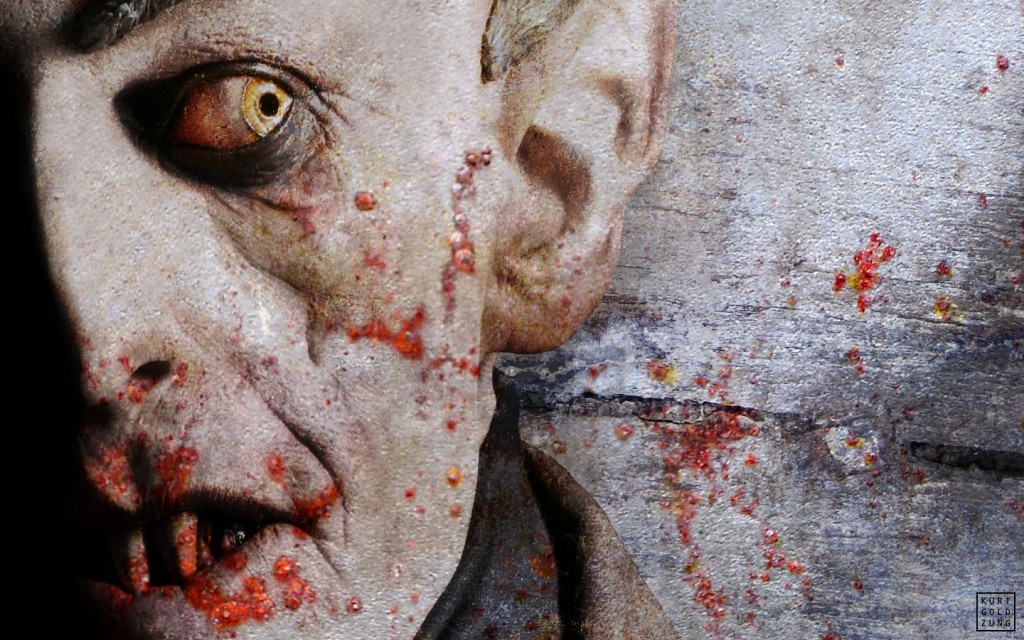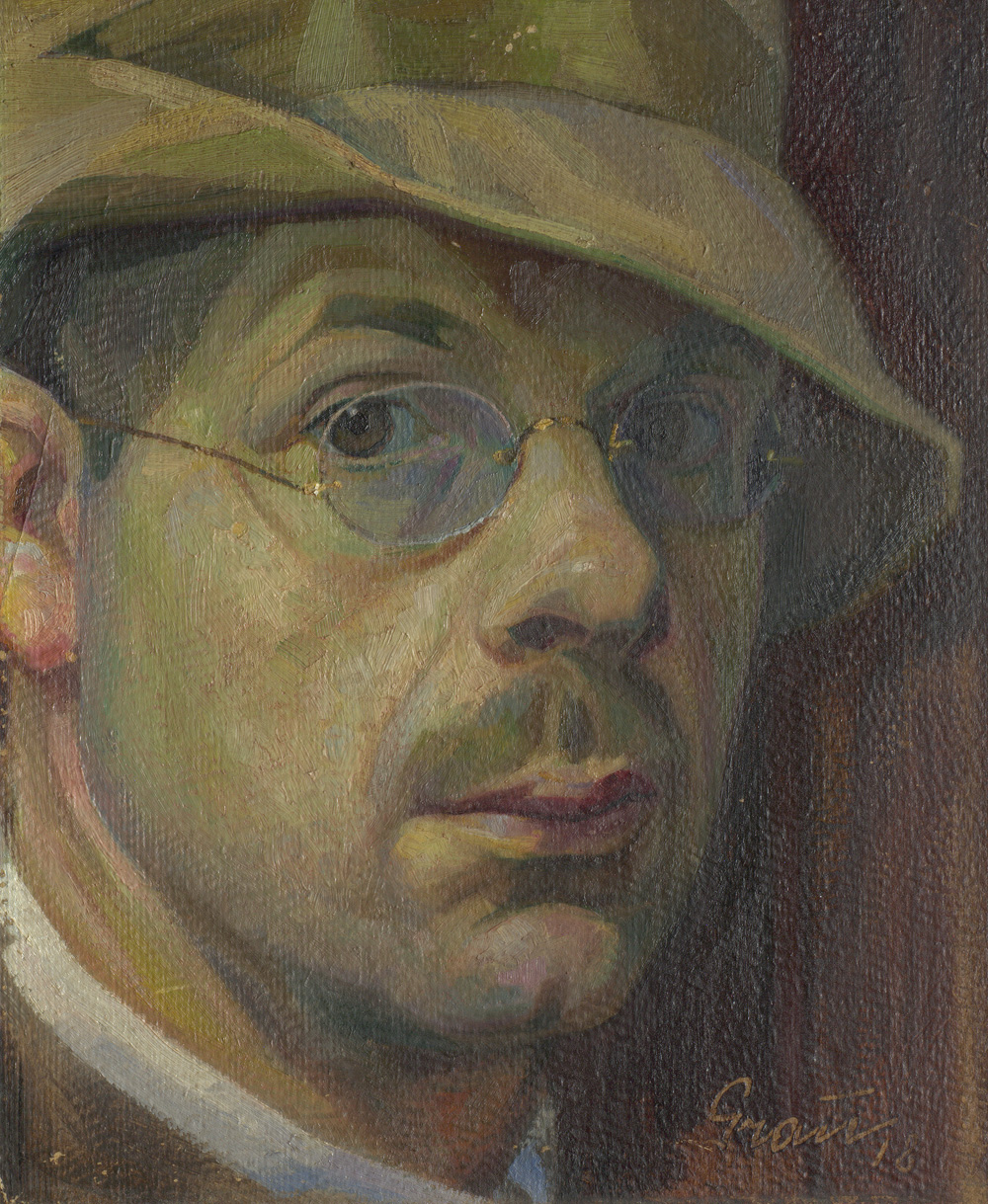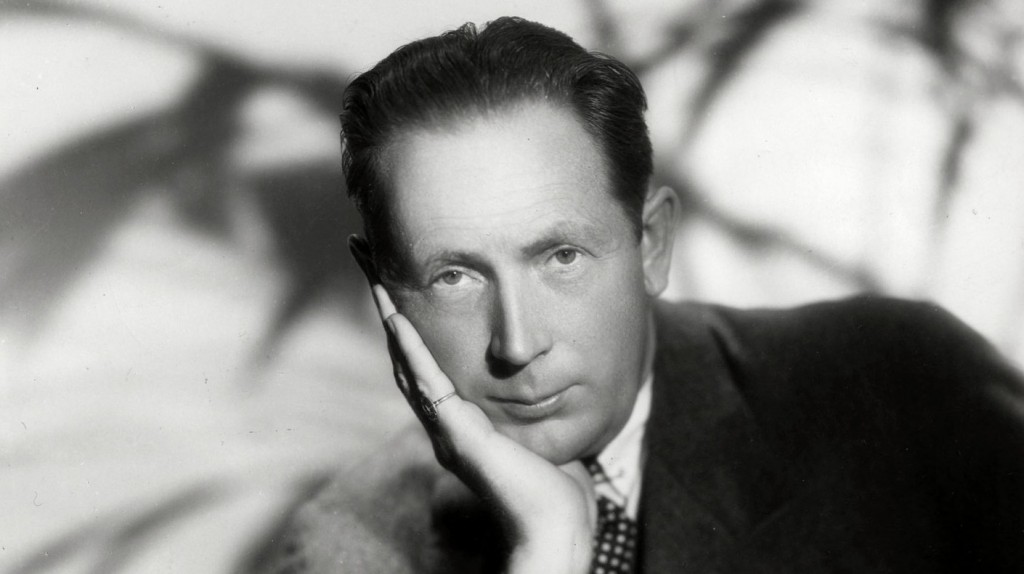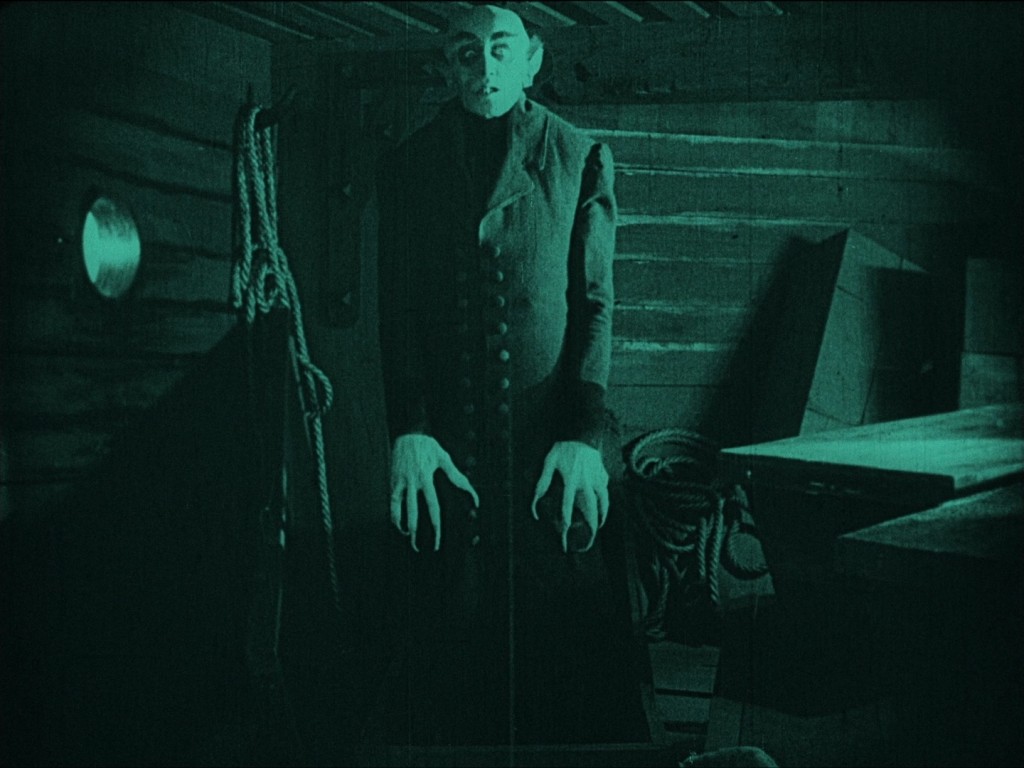News: Numerous screenings and events are marking the centenary of Nosferatu’s Berlin première on 4 march 1922. Drop me a line and I’ll add any here.
America’s National Public Radio just aired a short piece featuring two friends and contributors to this series of articles, and yours truly:
Try as she might, Bram Stoker’s widow couldn’t kill Nosferatu
Horror Reverie: An Online Symposium Celebrating 100 Years of Nosferatu, 19 February 2022 | Facebook | tickets | website | transcriptions and videos
Stummfilm Magazin list of commemorative events
French composer Olav Lervik’s new score is to have its first performance by German ensemble der/gelbe/klang (interview) in Munich on 4 March 2022, Nosferatu’s première centenary, with a second scheduled. Arte will then show it on 9 March, accompanied by a studio recording, where it will remain available until 1 June 2022. The broadcast will be preceded by…
WDR trailer, French teaser/alt | Chris Pohl | distribution
Amazingly, Nosferatu finally gets its first full length, dedicated, ahem, dracumentary. Nosferatu – Ein Film wie ein Vampir aka Nosferatu, un film comme un vampire (76min) is first broadcast almost on the original première’s anniversary, on Arte, 9 March 2022.
4 march 2022 also sees a screening at the Scala Kino in Fürstenfeldbruck, Bavaria, preceded by a lecture from Matthias J. Lange.
2022 screening dates: Nosferatu100.co.uk | clips
The great folks at Eureka have also rolled out a coffin-cartload of UK screenings for Carl Theodor Dreyer’s landmark Danish horror Vampyr (1932), coinciding with their limited edition Masters of Cinema Blu-ray of its new 2022 restoration.
Open Graves, Open Minds – Nosferatu at 100: The Vampire as Contagion and Monstrous Outsider online event 12 March 2022, 10.00–14.35 GMT
Nosferatu: un siglo de horror in Chile; a raft of screenings and events, 13–18 June 2022 | vid | poster/full, limited edition, vids: Fb/Tw/In, #2 | watercolour
Bologna’s 2022 Il Cinema Ritrovato includes Nosferatu and the Birth of Vampire Cinema, a lecture by leading film historian Professor Sir Christopher Frayling on 29 June. It’s followed by a free screening with Timothy Brock conducting the Orchestra del Teatro Comunale di Bologna in the Piazza Maggiore on 2 July.
First performed in July and August 2021 to coincide with the centenary of its conception and filming, „Nosferatu – ein Drehtag des Grauens“ (Nosferatu: A Day of Horror) returns to commemorate 100 years since its birth. This tongue-in-cheek romp, staged in a church that actually appears in the film, playfully reimagines the first day on set and the chaos that ensues. This popular event, courtesy of Theatersommer, is set to become an annual fixture and has already been confirmed for 2023. Die Kirche St. Georgen (Georgenkirche) Wismar, 15 July–6 August, 2022.
Nosferatu100: screenings with live music by Dmytro Morykit at Wilton’s Music Hall, London, 27 and 28 July 2022
Phantoms of the Night: 100 Years of Nosferatu is a major new exhibition at Berlin’s Scharf-Gerstenberg Collection, 16 December 2022–23 April 2023. There’s even free entry for those willing to make a blood donation!
Nosferatu at 100: Berlin exhibition examines vampire classic’s enduring appeal – The Guardian
July 2021: collectible poster specialists Under the Floorboards have this great new Nosferatu print for sale!

Genesis of a Vampire
- Nosferatu , the original onscreen Dracula tale, is one of the most iconic horror films ever
- They tried to kill it but failed: despite the myth of there being only one print, many survived
- There are more versions, different scores and sets of intertitles, than for any other silent film
- Beware: watching the wrong version can kill its impact more surely than a stake through the heart
- Entire history, every version and home video release laid bare, to quote Orlok, like “a beautiful neck…”
„Nosferatu – Tönt dies Wort Dich nicht an wie der mitternächtige Ruf eines Totenvogels. Hüte Dich es zu sagen, sonst verblassen die Bilder des Lebens zu Schatten, spukhafte Träume steigen aus dem Herzen und nähren sich von Deinem Blut.“
“Nosferatu – Does this word not sound to thee like the midnight call of the Bird of Death? Take care in saying it, otherwise the images of life will fade to shadows, and ghostly dreams will rise from your heart and nourish themselves on your blood.”

Nosferatu’s Count Orlok by Kurt Goldzung
Pay heed, weary traveller: this is the first of an in-depth series of articles covering everything Graf Orlok and best read sequentially.
Contents
- Enter Count Orlok
- Drakula halála (1923)
- A vampire’s tale: birth, death and resurrection
- Land of the undead: filming locations
- Shapeshifter: changes to the novel
- Orlok’s legacy
- Related articles
Enter Count Orlok
“Ahh, there you are. Won’t you please come in? Don’t be frightened, child. If you’re sitting comfortably, I shall begin…”
When it comes to home video releases, Nosferatu rises time after time. You just can’t keep a bad Count down. Its latest resurrection in HD, courtesy of the British Film Institute (BFI), is their second kick at the can. They’ve updated their 2002 DVD but the film’s already very well served, both on DVD and Blu-ray – so was it worth it? If you can’t wait to find out, fly to my Blu-ray reviews. But we have all night until the cock crows, so why rush? Before getting to that, let’s consider the following:
Nosferatu (1922), alongside the likes of The Phantom of the Opera (1925) and Metropolis (1927), is foremost among the ‘warhorses’ of silent cinema. That is say, out of all silent films in circulation today it is one of the most…
- …famous: replete with iconic imagery, it is often known to those who have never even seen a silent film.
- …often screened: it’s always playing somewhere. A vampire is not just for Halloween!
- …often rescored and accompanied live. As well as established, respected silent film musicians and composers, seemingly every week anyone who can play an instrument takes it upon themselves to create a new score. From piano to choral and electronica to goth rock, the success of the results are a matter of personal taste. Or lack of it.
- …often restored and reissued on home video. A mind boggling number of times in fact, as you’ll see later. From 8mm and 16mm cut-down show-at-home prints, onto Betamax and VHS, then via LaserDisc and DVD to Blu-ray and streaming, Count Orlok’s seen ‘em all. He may be ancient but he does like to keep up with the times, you know.
As Lady Macbeth might say, “Yet who would have thought the old man to have had so much blood in him?”

Poster by Conor Bryce, 2011; variant. Organist Martin Baker performed on the night.
- Nosferatu review (with spoilers) – Kage Baker, also in Ancient Rockets: Treasures and Trainwrecks of the Silent Screen (2011, paperback)
Drakula halála (1923)
Though this Hungarian production, whose title translates as Dracula’s Death, was shot in late 1920 and early 1921, a few months before Nosferatu, it wasn’t released until exactly a year after Orlok’s auspicious début. Nonetheless, it’s often cited as featuring the first “Dracula” onscreen ( when it’s this!) despite having little in common with Stoker’s creation. For starters, Drakula was a mere mortal like the rest of the cast and quite unlike the hyperbolic surviving poster with him baring impressive fangs; a black magic ceremony dream sequence is the film’s only connection with the supernatural. Long since lost, you’ll find everything currently known about it here:
- Dracula’s Death (2021) – László Tamásfi | signed: paperback, 60 ltd ed hardback | free PDF
- The Cinema’s First Dracula – Gary D. Rhodes, Horror Studies (2010)
- Dracula Unearthed – Lokke Heiss, Cinefantastique (1998)
- The Classic Horror Film Board: Drakula halála
- Drakula halála – Gerzson Szentes Péter
- Inside Dracula’s Death – Shade Rupe
- Graven Images/Part 2 – Lokke Heiss
- The Bioscope: Drakula halála
Check out this great series of articles on Nosferatu, Die zwölfte Stunde and Drakula halála by Guillermo Triguero.
A vampire’s tale: birth, death and resurrection
Nosferatu is the first true vampire film and though they both share the same source, it predates Dracula (1931) by nearly a decade. It’s a loose, unauthorised adaptation of the classic 1897 novel by Bram Stoker (1847–1912) and the first – and last – release by fledgling German outfit Prana-Film. At the helm was 6’11” (210 cm) tall, ex-World War I fighter pilot Friedrich Wilhelm ‘F. W.’ Murnau. Using unauthorised source material was nothing new for him: his earlier horror, Der Janus-Kopf (The Head of Janus, 1920), was an adaptation of Robert Louis Stevenson’s novel The Strange Case of Dr. Jekyll and Mr. Hyde. Regardless, Murnau was already well on his way to becoming one of the best regarded directors of the silent era. Following Nosferatu he fashioned further masterpieces like The Last Laugh (1924); Faust (1926) and Sunrise: A Song of Two Humans (1927), a winner of several awards at the first Oscars. Tragically, when only 42 years old and at the peak of his powers, Murnau died in a car accident shortly after completing his final film, Tabu (1931).
Though often overlooked in favour of Murnau, the real key player in the film’s creation was co-producer and production designer Albin Grau (1884–1971). He co-founded Prana-Film with businessman Enrico Dieckmann, initiated the project and appointed all the creative roles, including Murnau himself, and enlisted noted fellow filmmaker and occultist Henrik Galeen (1881–1949) to pen the screenplay. Galeen’s shooting script, with annotations by Murnau, can be read here and here. As well as being a talented artist and architect, Grau was a lifelong follower of the occult and responsible for the look and feel of the entire project. He designed the sets and costumes and drew all the storyboards, posters and other promotional artwork. He even even wrote the occult symbol-laden letter seen in the film itself and executed the fine intertitle calligraphy. Phew. Though the film will always be synonymous with Murnau, it is undoubtedly Grau who casts the longest shadow over Nosferatu.

Albin Grau (1884–1971), chief creative force behind Nosferatu. Self portrait (1918) courtesy of Kantonsbibliothek Appenzell Ausserrhoden.
The titular character himself was perfectly embodied by seasoned actor Max Schreck (1879–1936), whose name literally translates as “greatest fright” – you couldn’t make it up! Though he had many other stage and screen roles, he’s chiefly known nowadays for his turn as the creepy Count. Certainly the sheer brilliance of Nosferatu was no accident: many of the people involved both behind and in front of the camera went on to make some of the most enduring screen successes of Weimar era Germany. Nosferatu has been long acknowledged by critics and historians as an Expressionist masterpiece, alongside the likes of The Cabinet of Dr. Caligari (1920) and the aforementioned Metropolis. Now approaching its first century, the adventures of Orlok continue to be revered by critics and academics everywhere, and enjoyed by film fans alike.
Cinema Then, Cinema Now: Nosferatu
Land of the undead: filming locations
Filming took place over three months between July–October 1921, when most of the actors, including Schreck, who were stage regulars, were on their summer break. All the interiors were built by Albin Grau at Jofa-Atelier studios, Berlin-Johannisthal. For the exteriors, rather than go to the trouble and expense of travelling over 1,000 miles to the real former Transylvania, now part of Romania, Murnau and his crew shot much closer to home. Neighbouring Slovakia doubled for „das Land der Diebe und Gespenster“ (“the land of thieves and ghosts”), with Orava Castle providing the setting for Orlok’s lair. The north German cities of Lübeck and Wismar stood in for Wisborg; the former’s Salzspeicher (salt warehouses) gave Orlok the perfect vantage point from which to spy on Ellen. In 2022, the latter threw open its doors (and windows) to all visiting vampires! Nosferatu expert Martin H. Larsen recently travelled to all three places and posted two sets of fascinating then-and-now photographs: Nosferatour 2014 – Lübeck and Wismar and Nosferatour 2015 – Slovakia. There’s also this 2017 Orava Castle video tour with excellent then-and-now footage, as has Wismar und Lübeck 2021, but don’t follow the former’s narration too closely as it drops a few howlers, including the old canard about there being only a sole surviving print. Lastly, check out this great article at TourPedia.ru.
Shapeshifter: changes to the novel
Nosferatu, or to go by its full title, „Nosferatu – ein Symphonie des Grauens“ (Nosferatu: A Symphony of Horror), makes many changes to its source, Stoker’s Dracula:
- Firstly the title was changed, to something a little more oblique. In case you’re wondering, “Nosferatu” is possibly derived from the archaic Romanian/Transylvanian words Nesuferitu or Necuratu. These translate as “the insufferable/repugnant one” or “the unclean spirit”. In other words, a demon or devil. Alternatively it could be from the Greek nosophoros, meaning “plague carrier”. Aww, rats. Well, whatever it is, it’s not good.
- Count Dracula, with his outward appearance of being a courtly, cultured gentleman (further refined by his depiction in the 1920s stage play), here becomes Count Orlok – a fearful, feral, ratlike creature.
- All other names are changed too: Jonathan Harker becomes Thomas Hutter, Mina becomes Ellen, Renfield: Knock and so on.
- The story is more streamlined with many characters being dropped, such as Van Helsing, Dracula’s ‘brides’ and the leading couples’ friends. In their stead, a few new minor characters are added.
- Unlike Dracula, Orlok does not create other vampires at will: he kills his victims outright. This causes the blame for the deaths to be shifted elsewhere.
- Much of the action is transposed from 1890s Whitby in England to the fictitious German city of Wisborg in 1838. As for the rest of the film, the cast and crew never set foot in the real Transylvania.
- Perhaps most importantly (I’ll avoid an outright spoiler, but…) in the original novel, Dracula’s ultimate fate is very different: sunlight only weakens him. Its effect on Orlok has since become an integral part of vampiric folklore.
- Lastly, Nosferatu made two other profound changes to the story that weren’t assimilated into the accepted conventions of the bloodsucking undead. In retrospect, the course of 20th century vampire history may well have been more interesting if they had. In this take on the myth, religion offers neither succour nor protection against Orlok’s evil lust and the men are helpless and weak. They’re scared and unaware; completely powerless to prevent the terrible fate about to befall them. It is Ellen who is the strongest, most knowing character and it is she who proves to be the only worthy adversary of Count Orlok. Girl Power indeed.
Nosferatu and the Triumph of the Immaculate Heart – K. V. Turley
These alterations were likely made in an attempt to disguise Nosferatu’s origins and avoid accusations of plagiarism, but they weren’t enough. On its release, Prana were sued by Stoker’s widow, Florence. The film had not been a financial success; failure to secure widespread distribution in their home country and the US had hurt Prana considerably. The ongoing litigation with Florence Stoker caused yet more more damage and by the time she eventually triumphed in July 1925, they had declared the company bankrupt.
For more, see Nosferatu and the Public Domain, an excellent article detailing the court case and the film’s legal status. Florence was thus thwarted in securing the £5,000 she’d demanded in settlement, but wasn’t about to let it end there: instead she insisted on outright ownership of the film then, having obtained it, ordered that all copies be destroyed. She had never even watched it. Thankfully, various incomplete prints survived in safe hands and copies continued to be screened intermittently, especially after Florence’s death in 1937. Inexorably, its reputation grew and those prints ultimately became the basis of all the fully restored versions we know today.
A tragic coda is that Prana originally planned to make nine more occult-themed films, with titles like Hollenträume (Dreams of Hell) and Der Sumpfteufel (The Swamp Devil) – imagine what we could have had!
Orlok’s legacy
Nosferatu’s cultural influence is inestimable and it’s the great-grandaddy of virtually every horror film that followed. It directly inspired a near-eponymous 1979 remake starring a real life monster, as well as Shadow of the Vampire (2000) in which the actor playing Count Orlok is an actual vampire, running amok behind the scenes during the making of the original 1922 film. Cartoons, comics, novels, plays, TV ads, musicals, a ballet, and even operas – both rock and regular in at least 2001, 2005, 2014, 2016 and 2018 – have been based on the the Count’s misadventures. He’s been Reincarnated in Sound and 3D, and right now there’s yet another reimagining in the works, along with a mooted remake by Robert Eggers, writer-director of horror hit The Witch (2015). Incidentally, did you know Bonnie Tyler’s worldwide smash hit “Total Eclipse of the Heart” was originally written for a Nosferatu musical? Orlok continues to fire the imaginations of artists, authors and filmmakers everywhere, and is showing no signs of slowing down in his unfathomably old age.
Nosferatu review (with spoilers) – Kage Baker, also in Ancient Rockets: Treasures and Trainwrecks of the Silent Screen (2011, paperback)
March 2021 update: This may be rough and ready but it’s rather brilliant! Has there ever been a better song explicitly dedicated to Nosferatu?
The Demeter: A Sea Shanty for Vampires
There’s a creeper on the Demeter
And it only comes out at night
Grab your crucifix when you’re below decks
Because I think it likes to bite
We were cursed from the port in Varna
When we took the cargo on
I’m the only man left on this death ship
And I’m prayin’ for the dawn
We’ve been fogbound from the Biscay
Where the first mate lost his mind
The bloodless corpses lined the gunwale
And we dropped them in the brine
Chorus
I lash my wrists to the captain’s wheel as
The gale begins to blow
There’s something coming from below decks
And it’s coming for my soul
Chorus x2
© Chris and Byron Gordon, 2021
If you lick that, “Captain Blood the Vampirate” (2019) by Tom Mason and the Blue Buccaneers is in a similar vein, while Raven and the Dark Shadows’ “Dracula” (2023) is also pretty spiffy.
Nosferatu: History and Home Video Guide, Part 2
Grateful thanks to Aitam Bar-Sagi, David Shepard, Lokke Heiss, Martin H. Larsen and Patrick Stanbury for help with this series of articles.
Related articles
If you like this, you’ll love:
- Nosferatu: History and Home Video Guide: Genesis of a Vampire
- Part 2: 1920s Screenings
- Part 3: Surviving Prints and “Public Domain Version”
- Part 4: 1981–1987 Restorations
- Part 5: David Shepard and Eureka Versions
- Part 6: 1995 and 2006 Restorations
- Part 7: Serenading the Undead: So Many Scores
- Part 8: The Many Faces of Orlok: Restored Versions on Blu-ray and DVD
- Nosferatu Unleashed in HD: Every Blu-ray Reviewed
- Nosferatu History and Home Video Guide: Die zwölfte Stunde (1930)
- Nosferatu: Chronicles from the Vaults – reprints of rare articles
- Volume II
- Volume III – includes complete bibliography
- Nosferatu Rises: Reincarnated in Sound
Facebook: The Nosferatu Society | in-depth BD/DVD details: DVDCompare






My hat is off to you Brent – fantastic post! The amount of research done and time spent on this article is clear. Great, great job. Regarding pulldown patterns in the BDs. So, Eureka is converting 18fps to 24fps via a 1:1:2 ratio (i.e., frame pattern of 1233 4566 7899, etc …), but Kino is doing 1:2:1:2:1:2:3 + a deletion (i.e., frame pattern of 122 344 566 777 8 and so on)? Wow … just terribly botched, and strangely so, because repeating every third frame would be so much more simple. I like what you’ve written about the BFI BD… Read more »
Thanks for such an informative web page!
The 4th March, 1922 première version was 1,967m and the 2005/6 Berriatúa restoration is 1,914m. So 53 meters of 35mm film still missing. At 18fps, I believe that works out to 1 minute and 30 seconds of missing footage. Does anyone know what we are missing? Are there any surviving scripts or other documentation on what is missing? Anything significant, or is it just trimmings off existing scenes?
Hi Brent, thanks so much for putting together such an in depth, thorough and fascinating read. I’m a musician interested in scoring for silent films. I’m currently writing a score for Nosferatu to be performed live with the movie later this year. I’m trying to get a definitive answer about which version of the film I can use without violating copyright. I’m planning a DVD release, so need to be careful not to infringe any copyright laws. Obviously I’ll be adding my own soundtrack, but am also planning on replacing all the text, inter titles and credits. Am I right… Read more »
Quebec, Canada doesn’t seem to be happiest place for those wanting decent Blu-rays of Nosferatu and Chaplin films :'( but your work was very interesting in all its aspects! Keep up the good work
This is an amazing review , I can’t thank you enough for such a extensive article about this classic movie . I have the MOC bluray and been thinking about importing the BFI as well . Any more thoughts about when they may release the updated bfi blu since there has been more work done in 2016 ? What is DCP ? Thanks again .